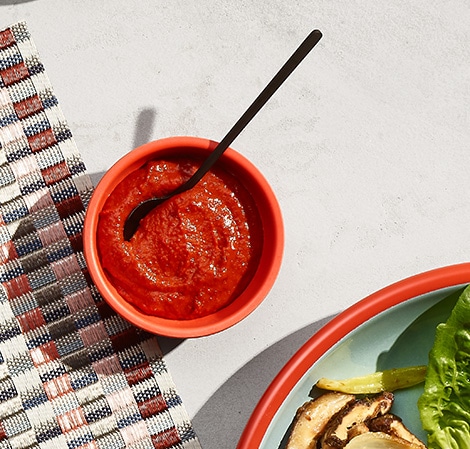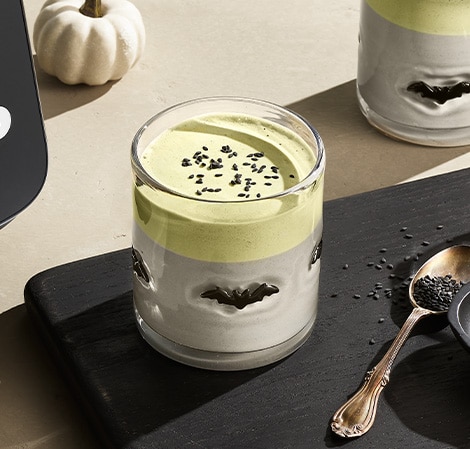Korean Cuisine: A Taste Adventure
Korean cuisine invites you to explore a world where food is not just nourishment, but a celebration of culture, community, and creativity. From the spicy kick of kimchi to the sweet and savory taste of Korean BBQ, there’s something for everyone to enjoy. But Korean cuisine is about so much more than just food, says Vitamix Culinary Team member Mia Hackney. It's about passing down recipes from generation to generation. It’s about creating an amazing array of dishes and delectable flavors. It’s about sharing a meal with the people you love most. Let’s explore some of Hackney’s favorite recipes and discover all the things you can make with your Vitamix.
Korea is famous for K-pop and K-dramas, cutting-edge beauty products, and groundbreaking technology. But it's Korea's rich and flavorful cuisine that truly showcases the heart of its culture.
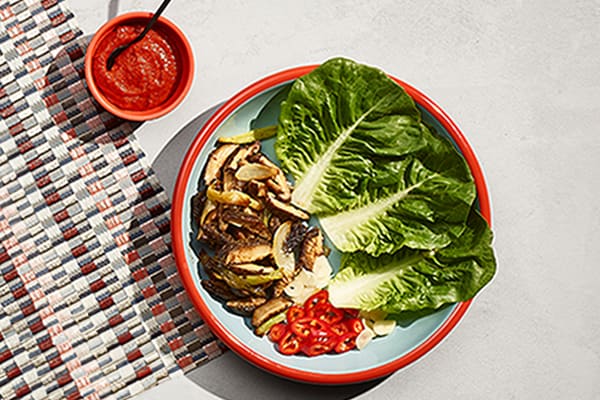
Balance
Fermentation plays a big role in Korean food. Before refrigeration, it was a way to preserve ingredients like vegetables and seafood for longer periods. Fermenting food also enhances its flavor, giving dishes like kimchi and gochujang a boost of umami. Plus, fermented foods contain probiotics that help with digestion, so they’re good for you, too. In addition to boosting the flavor, fermentation also helps balance it. And Korean food, Hackney explains, is all about balance, “Balance for me is hitting all five flavor profiles. You want that sweet balanced by sour or salt to neutralize bitterness and umami to tie it all together.”
Creativity
Whether you're a novice cook or a seasoned chef, the improvisational nature of Korean cuisine offers a unique opportunity for creativity in the kitchen. “A lot of Korean food doesn't have a specific recipe,” Hackney notes. When preparing Korean food, many home cooks rely on an intuitive cooking style, exemplified by the Korean term sohn mat, or “hand taste.” New York Times Magazine food columnist Eric Kim describes sohn mat as “taste memory.” “It’s everything you put into your food—your soul, your memories, your history with that dish. You can’t just write it down,” Kim said in an interview with Columbia Magazine.
Hackney agrees, “When my mom and I are cooking, we just taste along the way. A good example is this Japchae recipe. As we made it, we kept adding to it until it tasted good to us. My mom‘ll literally dangle a noodle over my mouth in the kitchen and ask ‘Is this good?’ ‘Does it need more sweetness?’ More soy sauce?’”
Family
Sohn mat, which can also mean 'a mother’s care,' is a concept that shines through in the recipes Hackney lovingly created. “Korean food means so much to me,” Hackney explains, “That’s why I was so excited when I was asked to come up with Korean recipes to share with Vitamix users. It gives me so much joy and fulfillment to be able to feed people this food and see how happy they get tasting something they’ve never tasted before and know it all comes from my mom.”
Hackney’s mom, Khana, was born and raised in a suburb of Seoul. Khana, fluent in Russian and English, pursued a career as an interpreter after graduating from university. When she saw Hackney's father, who was in Korea on business, Khana asked him out. They dated for seven months, married, and moved to Northeast Ohio, where Hackney and her brother were born.
The dishes Hackney developed for Vitamix are all based on her mother’s recipes. Hackney’s mom has influenced her life in many ways. “Any time I make Korean food, serve Korean food, talk about it—I’m thinking of her. She’s my best friend.” Her mother’s love of Korean cuisine even inspired Hackney’s choice of career. “I’m a chef today because she’s made me such great food my whole life. And I just want to be able to make other people happy and see them enjoy the same food I’ve loved since I was child.”
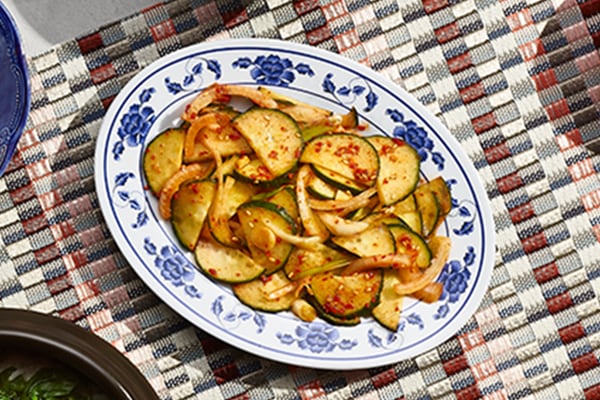
Hackney’s Tips for Cooking Korean Cuisine:
Do familiarize yourself with the food. Go to a Korean restaurant. Visit a Korean or Asian supermarket and look at the ingredients you’ll be using.
Don’t be afraid to experiment. In Korean cooking, no two chefs make a recipe the same way. “Kimchi is different in every household,“ Hackney explains, noting that cooks from different areas of Korea add different ingredients to their recipe. “It’s all good because it’s all kimchi, but yours is not going to be the same as your neighbor’s.”
Do taste as you cook and customize each recipe to suit your preference.
Don’t forget to let your Vitamix handle the knife work. Check the glossary to see which Vitamix machines Hackney used to make these recipes.
Do share with family and friends. Korean food is often served family-style, making every meal feel like a feast. “A typical meal will have rice and kimchi, two or three main dishes and ten or more banchan, smaller side dishes,” Hackney explains.
Glossary
Kimchi: Kimchi is a traditional Korean side dish made from salted and fermented vegetables like napa cabbage or Korean radish. Hackney recommends using the Food Processor Attachment and the 48-ounce Container in making this.
Japchae: Savory and sweet meet in Japchae, a delicious Korean dish of stir-fried glass noodles and vegetables. Hackney used the Food Processor Attachment to make this dish.
Gochujang: Spicy, savory, sweet — gochujang has it all! This fermented red chili paste is a popular condiment in Korean cooking. Note: Gochujang is normally fermented from scratch. The Culinary Team used an already fermented ingredient to save time. Hackney recommends the 48-ounce and 64-ounce Containers for this dish.
Bibimbap: Korean for “mixed rice,” Bibimbap is a bowl of warm rice topped with seasoned veggies, Gochujang, meat, and egg. Hackney used the Food Processor Attachment to make this dish.
Mushroom Bulgogi: This Korean BBQ staple is usually made of thin, marinated slices of beef. Hackney used mushrooms for a version her vegetarian mom can eat, too. Hackney recommends the 48-ounce and 64-ounce Containers for this dish.
Spicy Cucumber Salad: This crunchy, spicy side dish is also called oi muchim, which loosely translates to “seasoned cucumber.” Hackney used the Food Processor Attachment to make this dish.
Black Sesame Latte w/ Honey Matcha Foam Black sesame seeds, a popular ingredient in Korean cuisine, bring a toasty, nutty flavor to this savory-sweet latte. Hackney recommends using the Aer® Disc Container.



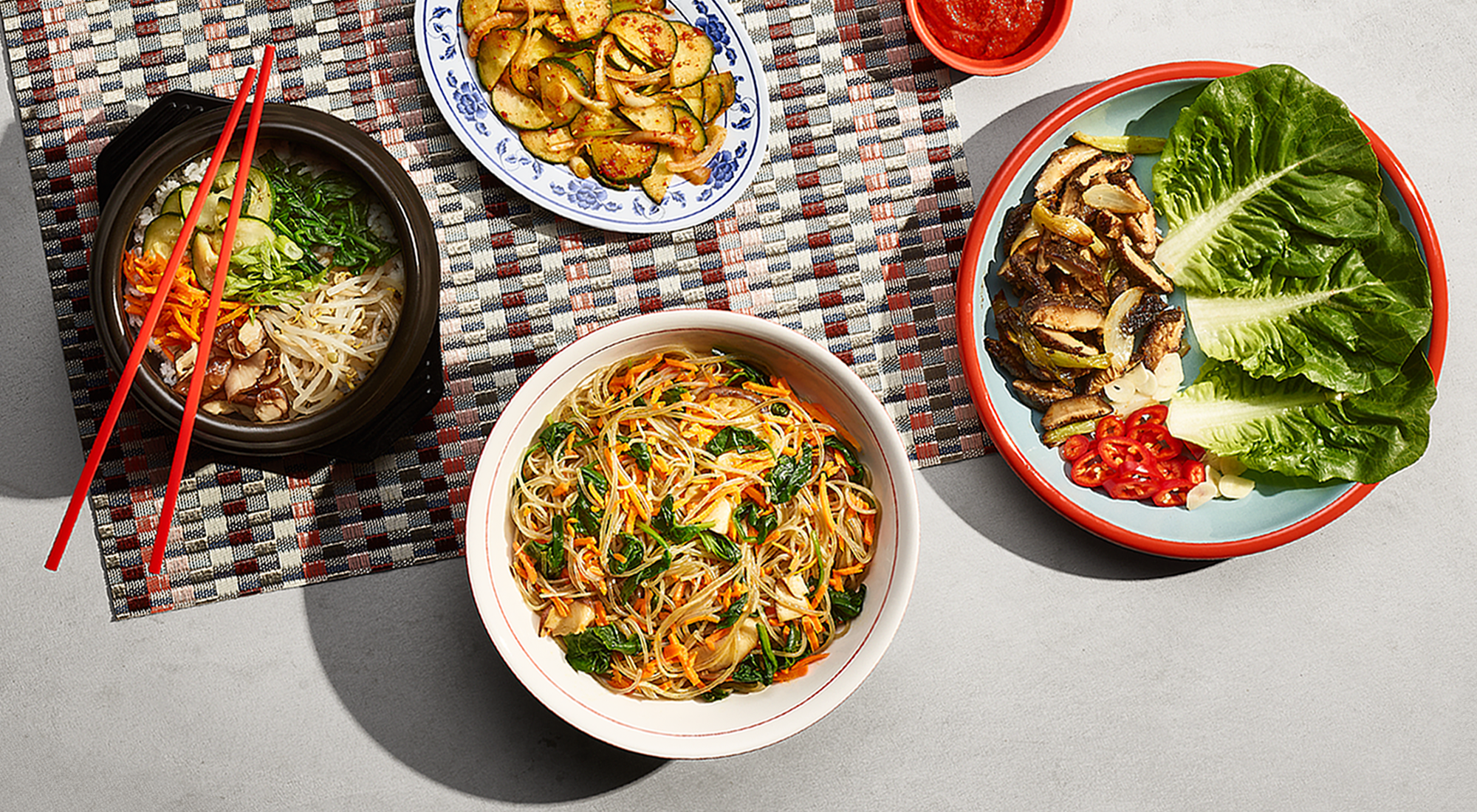
![Japchae [Food Processor Attachment]](/content/dam/vitamix/home/recipes/q4-2024/Japchae_470x449.jpg)
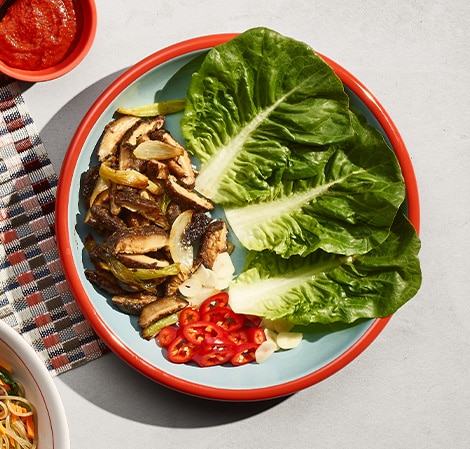
![Bibimbap [Food Processor Attachment]](/content/dam/vitamix/home/recipes/q4-2024/Bibimbap_470x449.jpg)
![Spicy Cucumber Salad (Oi Muchim) [Food Processor Attachment]](/content/dam/vitamix/home/recipes/q4-2024/SpicyCucumberSalad_470x449.jpg)
![Kimchi [Food Processor Attachment]](/content/dam/vitamix/home/recipes/q4-2024/Kimchi_470x449.jpg)
